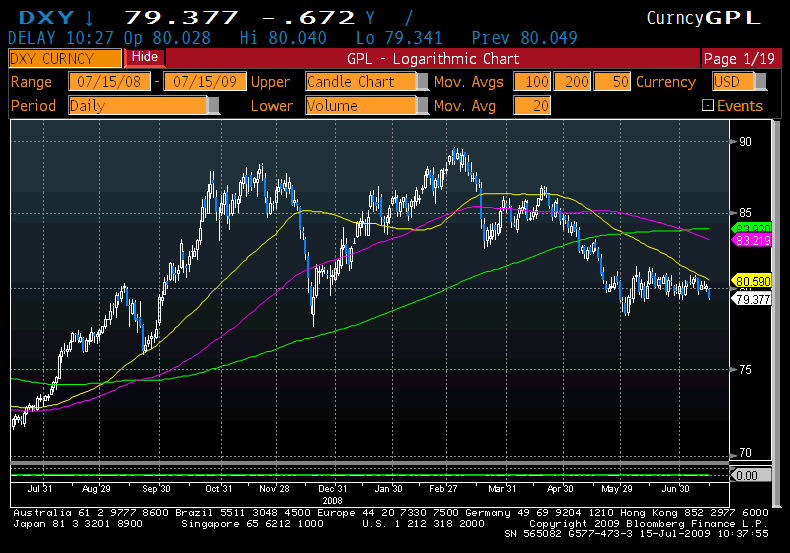Nothing brings out buyers like higher prices, and other short stories
This post is by Mark Dow
DXY, a dollar index, looks like it has started to break down. At my firm, Pharo, we have been whispering on the trading desk over the last two days that this was looking increasingly likely. The implications are positive for risky assets. Markets play a lot of tricks on investors, and you can’t be too certain of anything in times as unprecedented as these, but, to us, it looks like the short dollar trade is “on”.

Is there a fundamental reason for this? Not clear. However, I am pretty confident that if the dollar continues to sell off the way it has started to overnight and this morning, and Treasuries continue to weaken the way they have started to, the stories of debasing the currency and Chinese diversification and the like will bob right back up to the surface. So, there will at least be a fundamental ‘story’ behind it.
Personally, I always find it hard to put too much faith in these predominately bearish dollar stories when risky assets are doing well. And, almost inevitably, risky assets do well when the dollar sells off. The correlation between the dollar and risky assets continues to be very high. Here is a correlation matrix of some proxies, using daily observations over the past year.

In the first row and column of the table you’ll see DXY, the dollar index comprising a handful of G10 currencies. The other rows represent various and sundry risky assets—mostly EM currencies, the S&P, and EEM, the ETF for emerging market equities. CCN+ is the 12 month forward for the Chinese Rinminbi, since the forward moves much more in response to market impulses than does the spot rate, which, as all of you know, is tightly managed.
For the dollar to be negatively correlated to risky assets, DXY should be positively correlated the CCN+, negatively related to SPX, AUD (since the Australian dollar is quoted in terms of dollars per Aussie dollar), and EEM. DXY should be positively correlated to TRY (Turkish Lira), BRL (Brazilian Real), and JPY (Japanese Yen).
You’ll notice that all of the correlations have the expected sign with the exception of JPY. This is due to the residual influence of the carry trade and deleveraging process. Since the yen was the other heavily borrowed currency during the levering up phase that led to the crisis (though nowhere near as abused as the dollar in this regard), the yen is the only currency apart from the dollar that is regularly negatively correlated to risky assets. It is also worth pointing out that the yen is a significant component of DXY, and, were it not there the correlations between DXY and these assets would even be meaningfully stronger.
Why is the correlation high? The simple, stylized answer is that most investment funds, irrespective of where they are domiciled, are denominated in dollars. This will change over time, and will contribute to the unwind of the dollar overhang that I wrote about here last week, but until it does, when investors reduce risk they buy dollars and “bring their assets home”, and when they increase risk they sell dollars and put their money back to work across the globe. There is more to it than that of course, but, over short spans, this is the main driver.

Okay. So, where does the dollar go? The market intelligence that we have put together here at Pharo tells us that market positioning—especially amongst large hedge funds—is light. The choppy markets frustrated a lot of investors, and there is very little belief in any positive economic scenario from here (true or not, this is the consensus view). In response, hedge funds reduced their longs, cut their shorts and headed for the beach, protecting the gains that they have had this year. Prop desks on the street are also protective of the profits they have generated so far this year. After an experience like last year, people really seem afraid of “doing something stupid”. The implication here is that if markets do move up, cell phones on the beach will ring and performance anxiety will start. Traders will chase. If, by any set of miracles, the fiscal stimulus or whatever starts to throw off better-than-expected news, traders would catch themselves really wrong footed, and things could get ‘ugly’ to the upside. In short, people would be much more surprised with good news than bad at this juncture. This would lead the DXY meaningfully lower, probably back to the lows of last year.
 Online Store
Online Store
